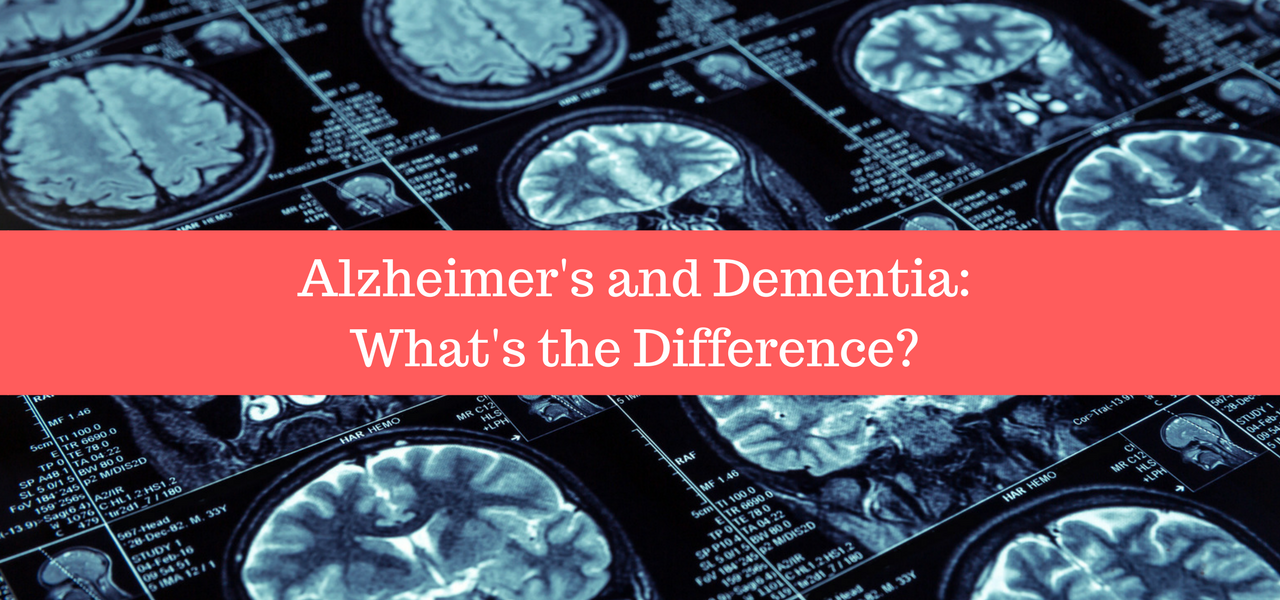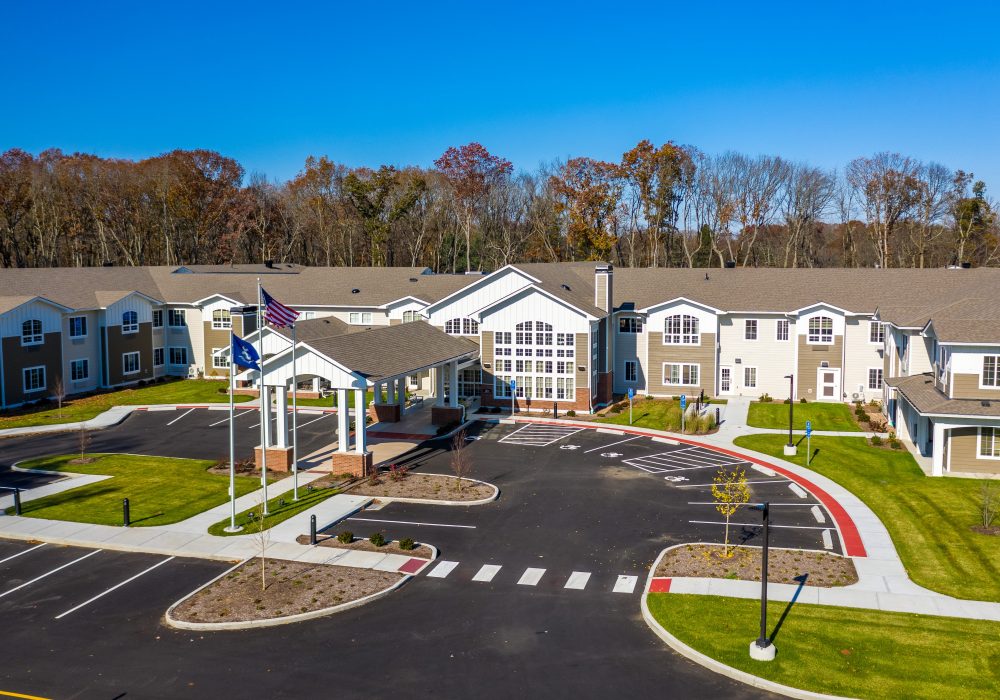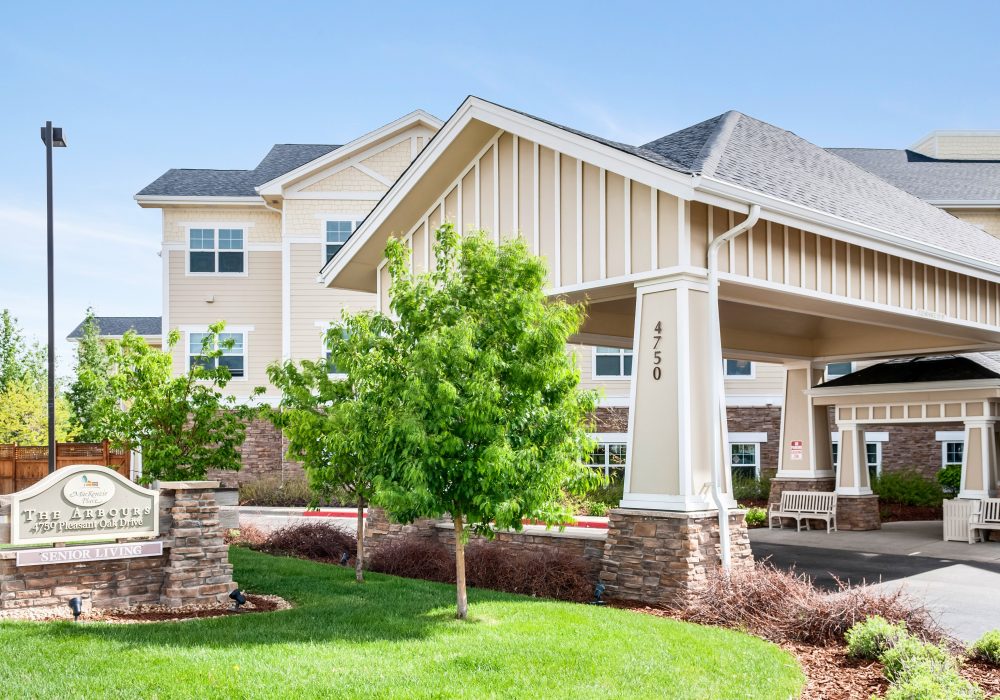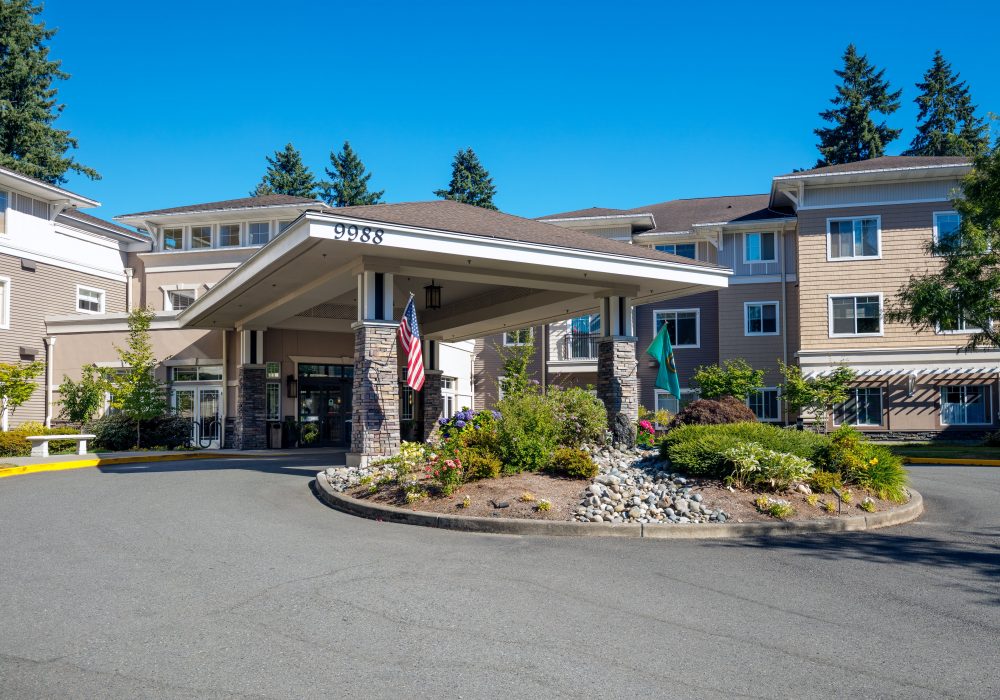
Alzheimer’s and dementia are two terms often used interchangeably to describe a condition with symptoms that include memory loss and cognitive impairment. While the two conditions are connected, the two terms are actually quite different and understanding the differences between the two is important for people living with the disease, family members, caregivers, and medical professionals.
What is Dementia?
Dementia and Alzheimer’s are not the same condition, even though the two terms are often used interchangeably. Dementia is actually the name of a group of conditions that includes Alzheimer’s and other forms of dementia.
Additionally, dementia is more than mere forgetfulness. To be diagnosed with dementia, an individual must have trouble with at least two of the following cognitive areas:
- Memory
- Communication and speech
- Focus and concentration
- Reasoning and judgment
- Visual perception (including trouble detecting movement, differentiating colors, or experiencing hallucinations)
Different symptoms are associated with each type of dementia and many symptoms overlap, making the exact type of dementia difficult to diagnose. One individual can also have more than one type of dementia. Sharing medical history, signs, and symptoms, as well as taking cognitive exams and even undergoing brain imaging scans can help medical professionals diagnose dementia correctly.
Experience Leisure Care Senior Living

The Landing of North Haven
Independent Living, Assisted Living, and Memory Care in North Haven, Connecticut

MacKenzie Place - Fort Collins
Independent Living, Assisted Living, and Memory Care in Fort Collins, Colorado
There are many different causes and types of dementia – one of which is Alzheimer’s disease. Other types of dementia include vascular dementia, dementia with lewy bodies, frontotemporal dementia, Creutzfeldt-Jakob Disease, and Huntington’s disease.
Different Types of Dementia
1. Vascular Dementia
Vascular dementia or vascular cognitive impairment (VCI) is considered the second most common cause of dementia after Alzheimer’s disease and accounts for 10% of dementia cases. Many experts believe that this condition is under-diagnosed and unrecognized. Vascular dementia is linked to inadequate blood flow that damages and eventually kills cells in the brain, putting those who have had a stroke or a mini-stroke at the highest risk for developing the condition. It is a progressive condition and has a range of symptoms, including confusion, depression, disorientation, trouble communicating, and vision loss. Stroke symptoms can also accompany vascular dementia which includes sudden headaches, trouble walking, and numbness or paralysis on one side of the body.
There are no drugs to treat the symptoms of vascular dementia but some clinical trials suggest that some drugs approved to treat symptoms associated with Alzheimer’s disease may also help people living with vascular dementia.
2. Lewy Body Dementia
Lewy body dementia (DLB) is another form of dementia, thought to be the third most common form accounting for 10%-25% of all dementia cases. This progressive condition is caused by abnormal microscopic deposits that damage brain cells. Named after Frederich H. Lewy, M.D, the hallmark brain abnormalities are also found in other forms of dementia including Alzheimer’s disease and Parkinson’s disease dementia. Symptoms of DLB include changes in thinking and reasoning, confusion and varied levels of alertness, hunched posture, balance problems, hallucinations, delusions, memory loss, REM sleep disorder, and malfunctions of the autonomic nervous system. Symptoms are similar to Parkinson’s disease and many experts believe the two conditions are different expressions of the same issue.
There are no treatments to stop or slow the progression of DLB and treatment efforts focus on managing symptoms.
3. Frontotemporal Dementia
Frontotemporal dementia (FTD), also known as frontotemporal degenerations or Pick’s Disease, is a form of dementia caused by the progressive loss of nerve cells in the frontal lobes (behind the forehead) or temporal lobes (behind the ears) of the brain. FTD manifests itself in different ways. Two of the most common ways include behavior variant frontotemporal dementia (bvFTD) characterized by prominent changes in personality and relationships and primary progressive aphasia (PPA) which affects language skills, speaking, and writing, and disturbances of motor function.
Most people with FTD are diagnosed in their 40s and early 60s. There is no treatment for frontotemporal dementia or any of its subtypes, but like other types of dementia, there are medications to mitigate symptoms of agitation, irritability, and depression.
4. Creutzfeldt-Jakob Disease
Creutzfeldt-Jakob disease (CJD) is a rare, progressive, degenerative and fatal type of dementia. This rare form of dementia affects one person in one million people per year worldwide, and roughly 300 people per year in the U.S. Symptoms usually become apparent around 60 years old and 90% of people diagnosed with CJD die within 1 year of diagnosis. There are three major categories of CJD which are sporadic CJD in which the person has no risk factors for the disease, hereditary CJD in which there is a family history, and acquired CJD in which the disease is transmitted by exposure, usually through medical procedures. Of the three types, sporadic CJD is the most common, accounting for 85% of all cases.
Symptoms of the disease include problems with muscular coordination, personality changes, impaired memory, and impaired vision. Other symptoms include insomnia, depression, and the eventual loss of the ability to move and speak. People with CJD ultimately enter a coma and pneumonia and other infections can lead to death. There is no treatment for control or cure CJD and all existing treatments focus on mitigating symptoms and maximizing quality of life.
5. Huntington’s Disease
Huntington’s disease (HD) is a form of dementia that causes the degenerative breakdown of nerve cells in the brain. The disease is genetic and every child of a parent with the disease has a 50% change of carrying the gene. Symptoms of HD generally start appearing between the ages of 30 to 50 and progressively increase for the next 10 – 25 years.
Symptoms of HD include personality changes, forgetfulness, impaired judgment, involuntary movements, trouble communicating, difficulty swallowing, and weight loss. Genetic testing is available to determine one’s risk for developing HD but there is no treatment or cure and, like other forms of dementia, treatment plans are focused on mitigating symptoms of the condition.
What is Alzheimer’s Disease?
Alzheimer’s and dementia are often used interchangeably, possibly because Alzheimer’s is the most common form of dementia with 60%-80% of all dementia diagnoses being Alzheimer’s disease. Alzheimer’s is a progressive condition that becomes worse over time. There is no cure and no proven way to stop or slow the disease.
Alzheimer’s is very hard to diagnose, and until recently, was only able to be diagnosed posthumously. Now, with technological advances being made in brain imaging, medical professionals have better insight into the brain and can see if the proteins associated with Alzheimer’s are present. If they are, it is possible the individual has Alzheimer’s. If the proteins are not present, Alzheimer’s cannot be diagnosed. Doctors also use cognitive tests that examine a person’s memory, learning, and cognitive ability to diagnose the disease.
Proteins Associated with Alzheimer’s Disease
While the exact cause of Alzheimer’s is unknown, there are two proteins that create plaques and tangles in the brain that are the leading suspects in cell death and tissue loss in Alzheimer’s. Beta-amyloid is a protein that clusters and creates plaques in the brain. These plaques build up between nerve cells and it is thought they block cell-to-cell signaling. Studies have also suggested that they can trigger inflammation and destroy disabled cells.
Within dying cells, researchers have found tangles of another protein called tau. Normally, tau is responsible for regulating the transportation system in the brain. But, when tau becomes tangled, it essentially disintegrates this transport system and keeps nutrients from moving to cells, eventually killing those cells.
Most people develop these plaques and tangles at some point but people with Alzheimer’s develop much more than the average person. In the progression of Alzheimer’s, the plaques and tangles follow a pattern, affecting the learning and memory areas of the brain first and then spreading.
Alzheimer’s Symptoms
The Symptoms of Alzheimer’s go beyond the symptoms of dementia and can include,
- Depression
- Apathy
- Difficulty remembering recent events
- Disorientation or confusion
- Behavioral changes
- Difficulty swallowing, speaking, or walking in the later stages
Treatment and Care Plans for Dementia and Alzheimer’s
Being able to accurately diagnose Alzheimer’s from other forms of dementia affects treatment plans, insurance coverage, and even care options. In most cases, dementia is irreversible and incurable. However, there are some medications that can help manage the symptoms of dementia and the drugs to treat dementia depend on the type of dementia. For example, there are drugs to make the symptoms of Parkinson’s disease more manageable but there is no way to stop or slow the dementia associated with Parkinson’s. Having an accurate diagnosis can help medical professionals create a comprehensive care plan.
Alzheimer’s is a terminal illness and individuals diagnosed with the disease live an average of 4 to 8 years after diagnosis. In the later stages of the disease, home care or moving to a memory care community may become necessary.
While dementia and Alzheimer’s are related conditions, they have different aspects that are important to recognize, becoming more apparent as the disease progresses. Contact one of our memory care communities today to learn more about Leisure Care’s holistic approach to memory care. Our caregiving experts are ready to come alongside your family and walk this road with you.
Find a Leisure Care Community
Better with age, exceptional with us! Come and see how Leisure Care communities are helping seniors rediscover (and sometimes reinvent) themselves.






